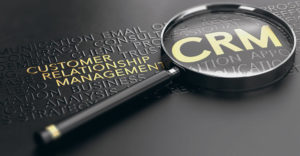
News that the economy shed an additional 85,000 jobs in December is enough to put a damper on any New Year’s celebration, and it was a sobering reminder as we trudged back to work in January that we are only in the early stages of a recovery.
Just to review, we know that employment is a lagging indicator and that nothing moves in a straight line. November’s employment news was better, December was worse and so, in this saw tooth fashion, you build a recovery.
One of the things not said about the recovery and something that I would like to bring to the fore is the idea of innovation. Innovation in new products and services is frequently the thing that leads an economy out of the woods. We’ve seen it many times before in fits and starts, but the innovative ideas that we need now are hard to discern. However, that doesn’t mean the ideas are not out there.
Picture This
It’s clear to me that innovation in CRM has to crystallize around sustainability in our business processes. Last week I wrote about the need for sustainable sales processes, but that just scratched the surface. Let me try a scenario on you, and then let’s see where it goes.
Suppose gasoline spikes to over US$4 per gallon again once the economy begins to heat up. What happens? Many economists think $4 (or more) gas is a deal breaker for economic growth, and unless things change, we could end up in a “Groundhog Day”-like scenario, where every time a recovery starts the escalating cost of transportation chokes it in its cradle, so to speak.
It might sound terrible and maybe far-fetched, but it could happen. The numbers I’ve seen say that this planet’s capacity to produce net new petroleum is at its limit. Combine that with the millions of new cars being put on the roads in China and India (and elsewhere) each year, and you begin to understand that with limited upside on supply and increasing demand, about the only other thing that can increase is the price of fuel.
Price concern is not limited to gasoline; jet fuel comes from the same place and is subject to the same supply and demand equation. You might say, well, we’ll just get electric cars or take the train, to which I would politely point out one or two sticking points, like there still aren’t any electric cars on the market, and rail infrastructure will have to improve significantly before it can be legitimately called “inadequate.”
The Need for Green
When I think about that, I get bullish about the prospects for the CRM industry. As it stands today, CRM is not equipped to help solve the challenges of what to do if transportation costs go up in a big way, but there are many glimmers of hope. CRM will be the first line of defense in any effort to both green our front office business practices and help organizations maintain social interaction with customers when the cost of face time becomes prohibitive.
Green innovation in CRM makes a lot of sense in this light. The continuing incorporation of social technologies in sales, marketing, service and support will be an important method for keeping your customers. But even more important are some of the applications that have not made it to your radar screen. Here are some ideas:
Incorporating low-cost VoIP into CRM beyond service and support makes sense now and will make even more sense later. But let’s make all the calls video calls, not just voice.
Developing new applications and processes that offer some limited vendor financing will disintermediate expensive and unreliable bank financing and provide a new way to pursue customer loyalty. After all, much of the demand destruction that happened in this recession came because companies became unable to secure the credit they needed for day-to-day activities. An expanded CRM can play a role there.
Some of the innovation we need to get the economy and our industry moving again will necessarily come from the vendor community, but a growing percentage of that innovation will be home-grown. For that, we will need secure, reliable, platform technology, not simply to host applications but also to support rapid development of robust systems that embody every company’s new secret sauce.
We still need to sort out platforms. Customers need to know in advance that if they need cloud computing and only buy infrastructure as a service that they won’t be getting what they need.
What’s next?
What fascinates me about the present moment in CRM is that we have a solid foundation and over 10 years worth of innovation into niche technologies that, with the right encouragement, will become the next big and green things.
As you’ve read this, I am sure you’ve thought about one or more companies that have products that already do some of the things suggested. What we need now is a new consensus, one that says, hey, let’s innovate, and more importantly the direction of the innovation ought to be in the direction of green business processes. It will create jobs, and our customers and our shareholders will thank us.
Denis Pombriant is the managing principal of the Beagle Research Group, a CRM market research firm and consultancy. Pombriant’s research concentrates on evolving product ideas and emerging companies in the sales, marketing and call center disciplines. His research is freely distributed through a blog and Web site. He is working on a book and can be reached at [email protected].
























































